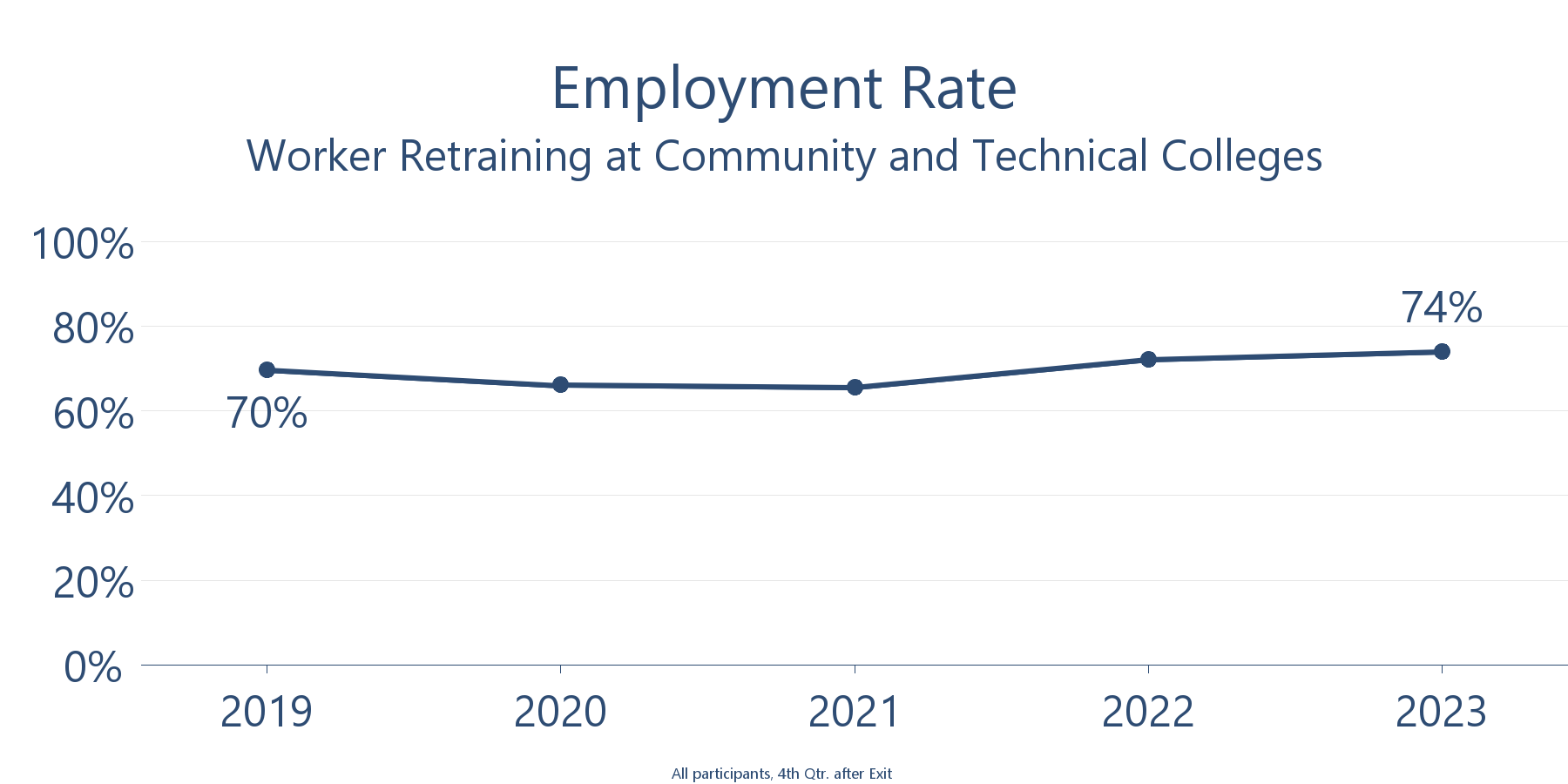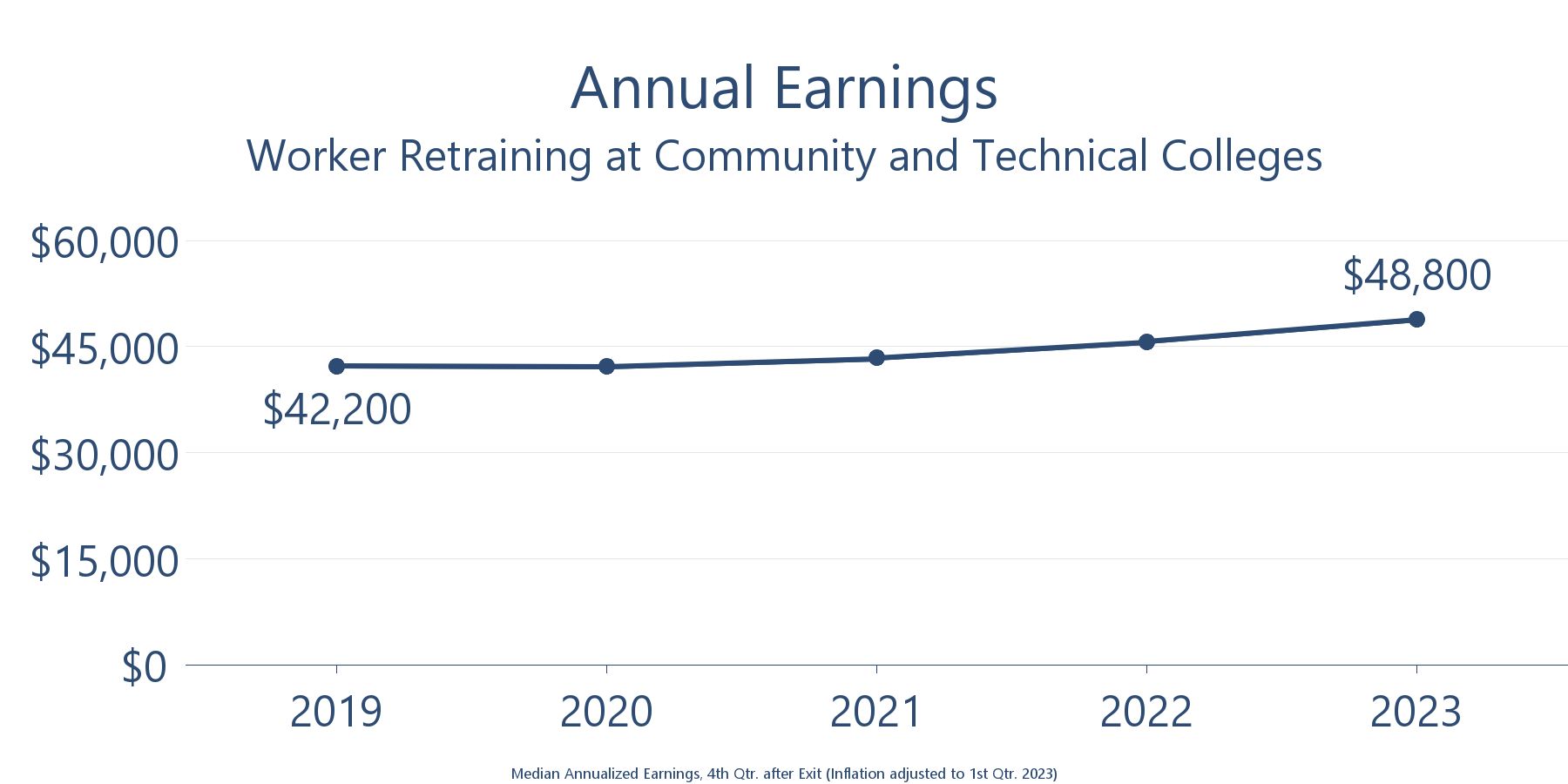Worker Retraining at Community and Technical Colleges
The Worker Retraining program provides dislocated workers and the long-term unemployed with access to job retraining for a new career. Program enrollments vary from year to year in response to layoffs. During recessions the need increases. The industries from which students are laid off also vary over time. While some students receive their training at private career schools, this evaluation is limited to training at the state’s 34 community and technical colleges. The colleges provide training in occupational skills and basic skills and literacy. Qualifying students may receive financial assistance to help with their tuition.
State Core Indicator Results
| Employment Percentage of participants in paid employment four quarters after leaving the program. Employment rate for just those that completed the program in parenthesis. * |
74% (75%) |
|
Earnings |
$48,800 |
| Skills Percentage of participants who completed the program. |
67% |
| Net Employment Effect Additional employment rate attributable to the workforce development program. ** |
3.2% |
| Net Participant Benefits Additional yearly earnings attributable to program participation (adjusted for benefits, taxes, and costs of participation). ** |
$7,800 |
| 10-Year Economic Impact Economy wide 10-Year net economic benefit provided by the workforce development program. ** |
$299 Million |
| 10-Year Taxpayer Return on Investment Taxpayer’s 10-Year net return from an investment in the workforce development program. ** |
$2.90 to 1 |
*Includes out-of-state employment data. Does not include self-employment. **See latest Net Impact Study.


